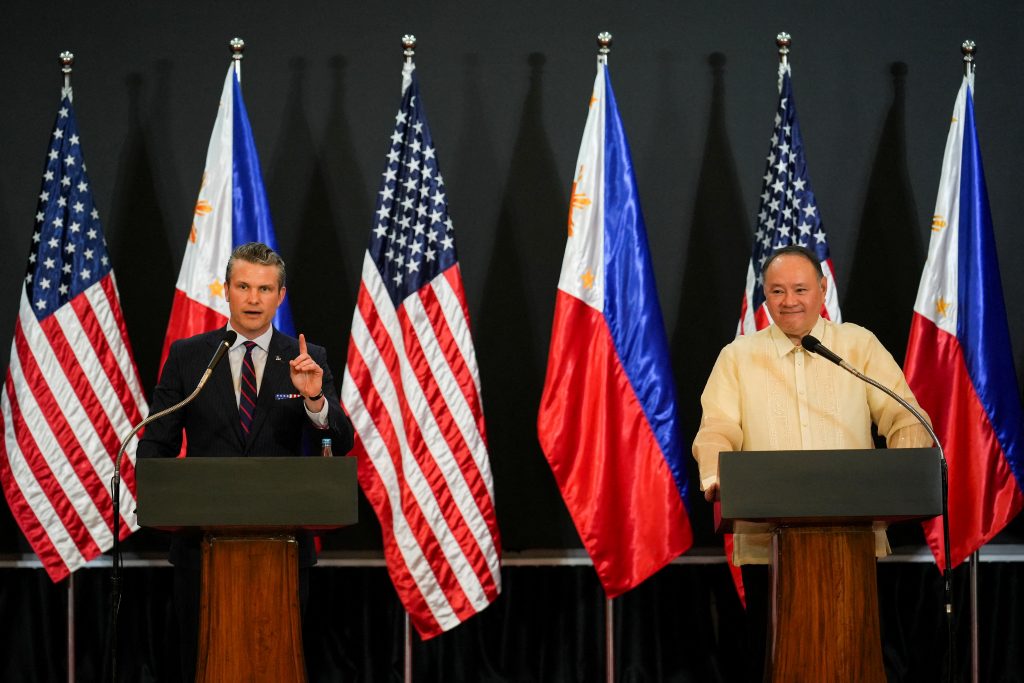Secretary of Defense Pete Hegseth announced on Friday that the US would deploy an anti-ship missile system to the Philippines, a move that’s sure to raise tensions with China.
The Navy Marine Expeditionary Ship Interdiction System (NMEIS) has a range of about 100 miles and would be able to hit Chinese targets in the South China Sea, where the Chinese and Philippine coast guards often have tense encounters over disputed rocks and reefs.
The deployment of the NMEIS to the Philippines will be on top of the presence of a US Typhon missile launcher in the country. The Typhon is a land-based missile system capable of firing Tomahawk missiles, which have a range of about 1,000 miles, meaning it can reach mainland China.

The Typhon can also fire SM-6 missiles, which have a range of about 290 miles. US officials envision using SM-6 missiles to target Chinese ships in a future war with China over Taiwan. China has been furious over the Typhon deploying, saying that by sending the missile system to the region, the US is inciting “geopolitical confrontation” and an “arms race.”
Hegseth announced the US was deploying the NMEIS along with unmanned surface vehicles (drone boats) to the Philippines while the country. “We agreed that the United States will deploy additional advanced capabilities to the Philippines,” Hegseth said alongside his Philippine counterpart, Gilberto Teodoro.
“This includes using the NMESIS anti-ship missile system and highly capable unmanned surface vehicles in exercise Balikatan this April. These systems will enable US forces and the Armed Forces of the Philippines to train together on using advanced capabilities to defend the Philippines’ sovereignty,” Hegseth added.
The Balikatan exercise is the most significant annual military drill between the US and the Philippines. The Typhon missile system was first deployed to the Philippines as part of last year’s Balikatan and has remained since then, signaling the NMESIS might stay in the country for the long-term as well.
During Hegseth’s visit, the US and the Philippines reaffirmed that the US-Philippine Mutual Defense Treaty applies to attacks on Philippine boats in the South China Sea, a commitment first made by the US during the first Trump administration and repeatedly reaffirmed by the Biden administration. The commitment means the US is willing to go to war with China over the maritime dispute in the South China Sea despite the risk of nuclear escalation.
The US and the Philippines said in a joint statement that Hegseth and Teodoro “reaffirmed that the [Mutual Defense Treaty] extends to armed attacks against either country’s armed forces, aircraft, and public vessels – including those of their coast guards – anywhere in the South China Sea.”
Hegseth also called out China during his visit, saying the US was standing with the Philippines in the “face of communist China’s aggression in the region.”
Chinese Foreign Ministry spokesman Guo Jiakun responded to Hegseth’s comments, saying, “The US needs to get rid of its Cold War mentality, stop creating ideological confrontation, stop sowing tension in the region and discord between its countries, and stop being the disrupter and provocateur in the South China Sea.”


